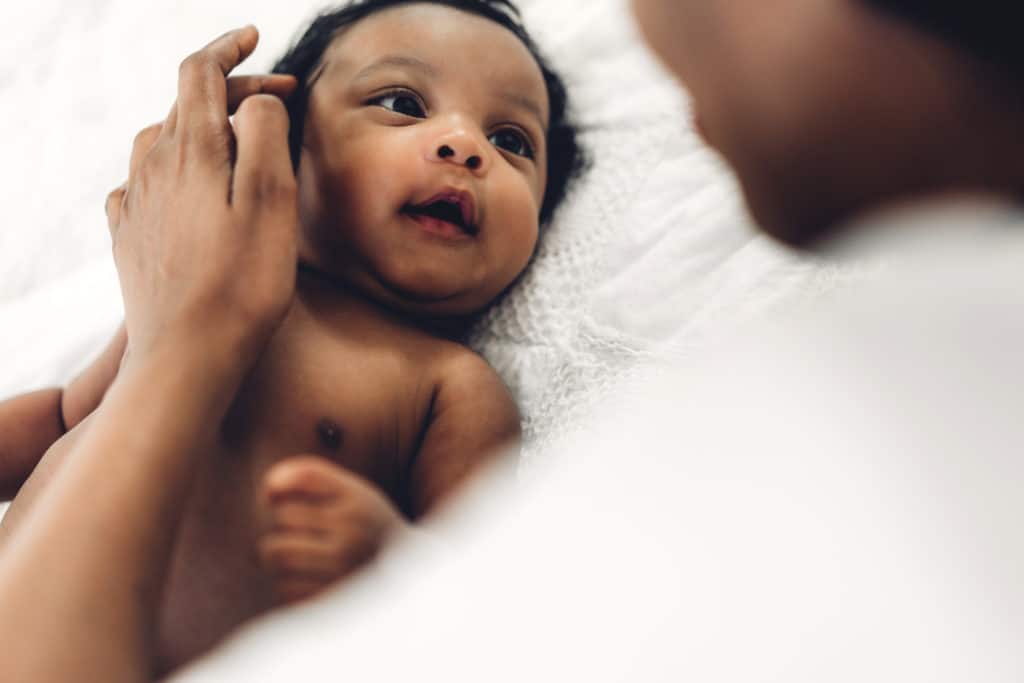
Hearing loss in Infants:
Hearing problems in toddlers can sometimes be overlooked because the signs and symptoms may seem unrelated. If a child seems like they are ignoring instructions and talking when they should not, it may seem like a behavioral issue. However, these are also signs of an undiagnosed hearing loss!
There are three main types of hearing loss that can occur in infants. Some can be temporary (Conductive), while others are permanent (sensorineural), and Mixed.
The most common cause of hearing loss in toddlers occurs from ear infections. An ear infection happens when you get infected fluid or pus behind the eardrum. When secretions get trapped in the middle ear, viruses or bacteria can cause an infection and result in a bulging or reddened eardrum.
Conductive Hearing Loss:
Conductive hearing loss is caused by a problem in the outer or middle ear making sound unable to travel to the inner ear properly. In many cases, ear infections are the most common cause of this type of hearing loss in infants and young children. Conductive hearing loss is usually mild, temporary, and treatable with medicine or surgery
Sensorineural Hearing Loss:
Sensorineural hearing loss can happen when the sensitive inner ear (cochlea) has damage or a structural problem, Your child’s cochlea contains hair cells that turn sound into electrical signals that the brain can understand. When these hair cells die, are damaged, or don’t grow the right way, your child can lose some or all of their hearing.
It usually exists at birth and can be inherited or come from other medical problems, though sometimes the cause is unknown. Sensorineural hearing loss usually cannot be cured with medicine or surgery, but hearing aids or cochlear implants can help in most cases.
The severity of Sensorineural hearing loss can stay the same or change over time.
These levels include:
Mild. ( Cannot hear some sounds.)
Moderate. ( Cannot hear many sounds.)
Severe. ( Cannot hear most sounds.)
Profound. ( Cannot hear any sounds.)
Mixed Hearing Loss:
Mixed hearing loss occurs when a child has both conductive and sensorineural hearing loss. AN example of this would be a child with sensorineural hearing loss who also has a middle ear problem (such as fluid in the middle ear). This will cause hearing to become even worse.
Signs and Symptoms:
Signs of an Ear infection
- Tugging or pulling at the ear(s)
- Trouble sleeping
- Fluid draining from the ear
- Trouble hearing or responding to their name being called or soft sounds
- Clumsiness or problems with balance
- Fussiness or crying
- A fever
Signs of a hearing problem
- difficulty learning
- needs things to be repeated multiple times
- fails to respond to conversational level speech
- fails to respond to their name
- needs higher TV volume
- behavioral issues.
Treatment for hearing loss in toddlers:
Over 30 states in the United States require newborn hearing screenings. Treating hearing loss early can allow many infants to develop normal language skills without delay. In infants born with hearing loss, treatments should start as early as age 6 months.
Treatment depends on the baby’s overall health and the cause of hearing loss. Treatment varies for the type and severity of the hearing loss.
Some treatments can include:
- Speech therapy
- Medications for infections
- Ear tubes for repeated ear infections
- Surgery to correct structural problems
- Hearing aids to help amplify sounds
- Consideration of a cochlear implant for severe or profound hearing loss
Hearing loss can occur at any age. Here are some developmental milestones for a child with normal hearing:
0 to 3 months
- The child Reacts to loud sounds with startle reflex.
- The child Is soothed and quieted by soft sounds.
- The child Turns head to you when you speak.
- The child smiles in response to certain voices when spoken to.
4 to 6 months
- The child looks or turns toward a new sound.
- The child responds to “no” and changes in tone of voice.
- The child begins to repeat sounds (such as, “ooh,” “aah,” and “ba-ba”)
7 to 12 months
- The child responds to his or her own name, telephone ringing, or someone’s voice, even when not loud.
- The child knows words for common things (such as, “cup” or “shoe”) and sayings (such as, “bye-bye”).
- The child imitates simple words and sounds; may use a few single words meaningfully
24 to 36 months
- The child follows 1-step commands when shown by a gesture.
- The child uses words he or she has learned often.
- The child uses 2 to 3-word sentences to talk about and ask for things.
- The child understands many action words (such as run or jump)
It’s important to remember children reach milestones at different ages. Talk with your child’s healthcare provider if you suspect your child is not hearing appropriately. Salem Audiology can test your child’s hearing! Our team of Audiologists in, Salem, Keizer and Woodburn have access to hearing tests and evaluations for infants and children of all ages and developmental levels.
Call us today and schedule your appointment!
